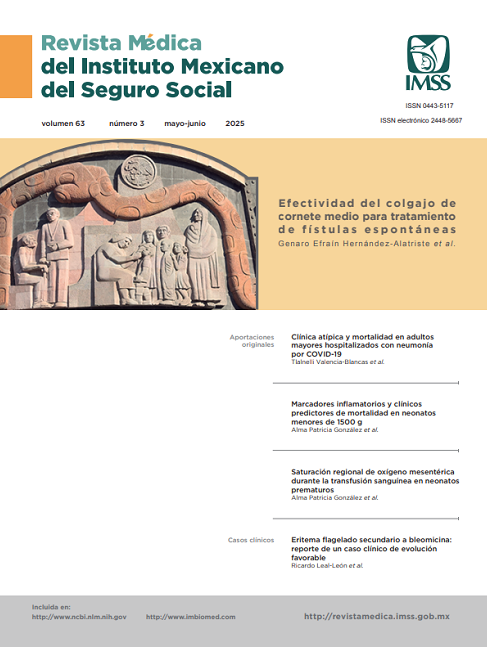Comment on the article “Erythrocyte morphological alterations as predictors of kidney injury severity”
Main Article Content
Keywords
Renal Insufficiency, Chronic, Erythrocytes, Anemia
Abstract
After reviewing the article “Erythrocyte morphological alterations as predictors of kidney injury severity” published by Cruz-Balbuena et al., we can emphasize that erythrocytic changes have several pathophysiological mechanisms, such as iron deficiency, vitamin B12 deficiency, and the pro-inflammatory state of chronic kidney disease (CKD) itself. Furthermore, due to the accumulation of uremic toxins that result in a shortened lifespan of erythrocytes, a selection bias was found in their population and a positive but non-linear correlation. There are already several well-established progression markers with better correlation.
References
Cruz-Balbuena A, Piedras Reyes L, Sánchez-Serrano JC et al. Alteraciones morfológicas eritrocitarias como predictores de la gravedad del daño renal. Rev Med Inst Mex Seguro Soc. 2024;62(6):e6205. doi: 10.5281/zenodo.13306729
Georgatzakou HT, Antonelou MH, Papassideri IS, et al. Red blood cell abnormalities and the pathogenesis of anemia in end-stage renal disease. Proteomics Clin Appl. 2016;10(8):778-90. doi: 10.1002/prca.201500127
Terry LRN, Mendoza-Hernández CA. Importance of peripheral blood smears study in the elderly. Medisur. 2017;15(3):362-82.


